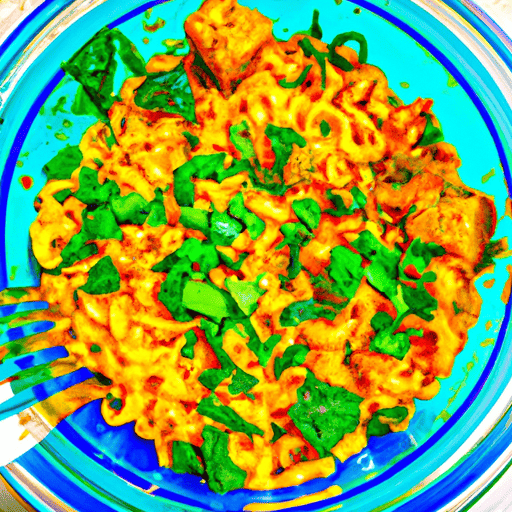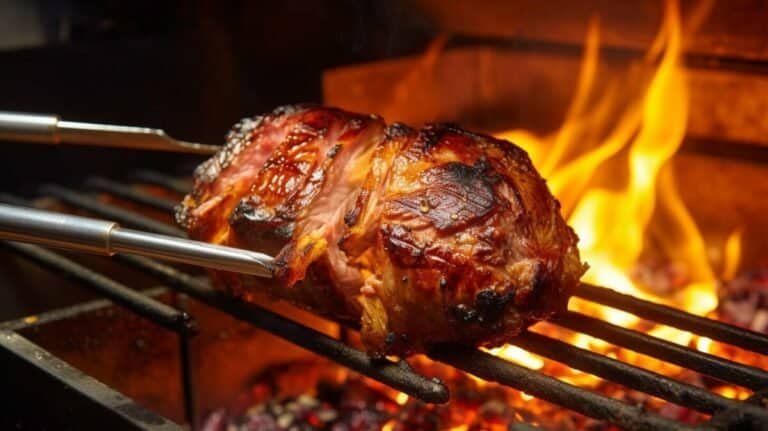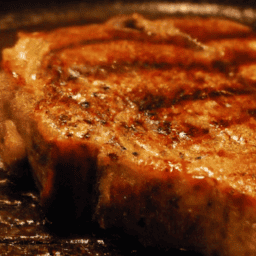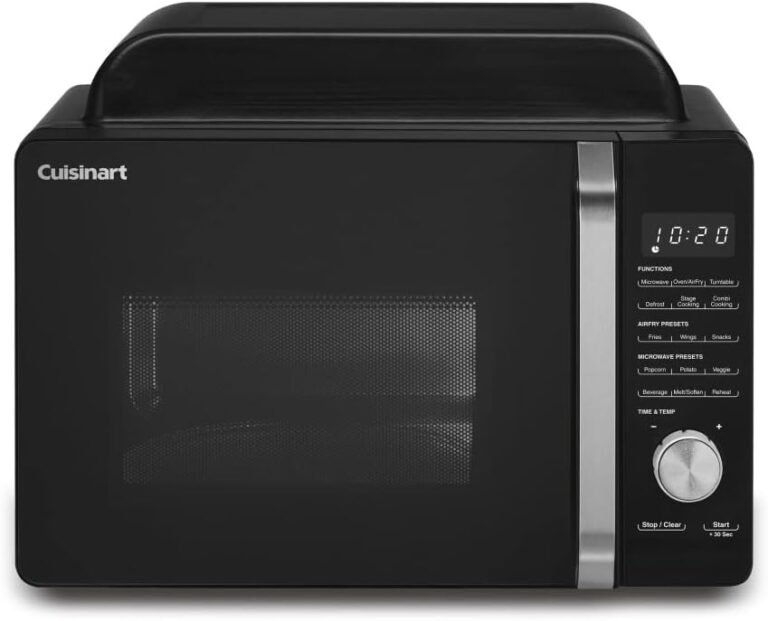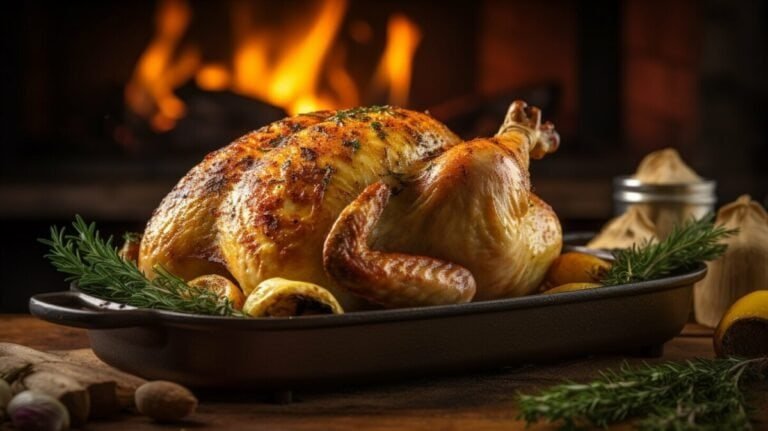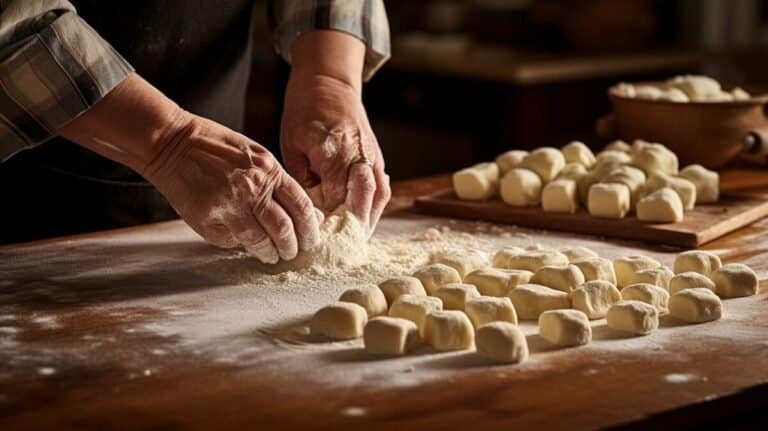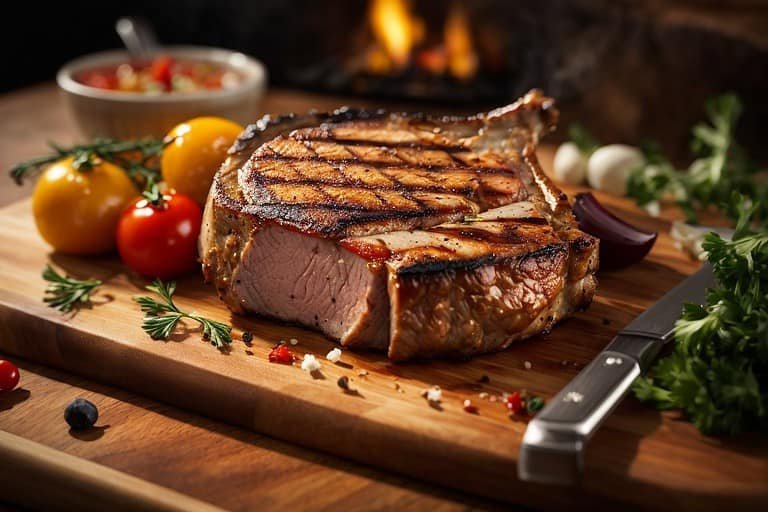How To Cook Noodles In The Microwave
Craving a quick and easy meal? Look no further! In this article, you will discover the foolproof method for cooking noodles in the microwave. Whether you’re a busy student or just in need of a convenient dinner option, this simple technique will have you enjoying a delicious bowl of noodles in no time. Say goodbye to waiting for a pot of water to boil on the stove – with this microwave method, you’ll have a mouthwatering meal ready in minutes. Let’s get cooking!
Understanding the Types of Noodles
Differentiating between fresh and dried noodles
When it comes to cooking noodles in the microwave, it’s important to understand the different types of noodles available. One key distinction is between fresh and dried noodles. Fresh noodles are typically made from wheat flour and eggs, giving them a soft and tender texture when cooked. On the other hand, dried noodles are made without eggs and are often made from wheat, rice, or other grains. Dried noodles are firmer and can withstand longer cooking times without becoming mushy. Knowing the difference between fresh and dried noodles will help you choose the right type for your microwave cooking.
Knowing the various types of noodles: wheat, rice, egg, etc.
In addition to the distinction between fresh and dried noodles, it’s also important to consider the specific type of noodle you’ll be cooking in the microwave. Some popular types of noodles include wheat noodles, rice noodles, egg noodles, and soba noodles, among others. Each type of noodle has its own distinct flavor and texture, which can greatly affect the outcome of your microwave cooking. For example, egg noodles have a rich and buttery taste, while rice noodles are light and delicate. Understanding the characteristics of different noodle types will help you make the right choice for your microwave cooking adventures.
Choosing the right noodle for microwave cooking
When it comes to cooking noodles in the microwave, choosing the right type of noodle is crucial for achieving the best results. Fresh noodles, with their soft and tender texture, are generally more suitable for quick microwave cooking. Dried noodles, especially those made from wheat or rice, can handle longer cooking times without losing their texture. Consider the recipe you’ll be using and the desired texture of the noodles when selecting the best type for microwave cooking. With the right choice of noodle, you’ll be well on your way to a delicious and convenient meal.
Gathering the Needed Materials
Selecting an appropriate microwave-safe dish
Before you start cooking noodles in the microwave, it’s important to choose the right dish to cook them in. Look for a microwave-safe dish that is large enough to accommodate the noodles and cooking liquid without overflowing. Glass or ceramic dishes are popular choices for microwave cooking as they distribute heat evenly. Avoid using metal or plastic containers, as they can cause uneven cooking or release harmful chemicals when heated. By selecting an appropriate microwave-safe dish, you’ll ensure that your noodles cook evenly and safely.
Must-have utensils: Fork, knife, and scissors
When it comes to cooking noodles in the microwave, having the right utensils on hand can make the process much easier. A fork and knife will come in handy for breaking up any noodles that stick together and for testing the doneness of the noodles. Scissors are also useful for cutting noodles that are too long for the dish or for trimming any excess noodle length. These basic utensils are essential for successfully cooking noodles in the microwave and ensuring they are cooked to perfection.
Considerations for type of liquid to use: water, broth, etc.
The choice of cooking liquid for microwave noodles depends on personal preference and the desired flavor of the dish. Water is the most common and neutral choice, as it allows the flavors of the noodles to shine through. However, using broth can add extra flavor and depth to your dish. Consider using vegetable or chicken broth to enhance the taste of the noodles. Another option is to use a combination of water and broth to strike a balance between flavor and neutrality. Experiment with different liquids to find the one that suits your taste buds best.
Preparing the Noodles for Cooking
Breaking or keeping the noodles whole
Before cooking noodles in the microwave, you may need to make a decision on whether to break the noodles or leave them whole. This choice largely depends on personal preference and the size of your microwave-safe dish. Breaking the noodles into smaller pieces can help prevent them from clumping together and ensure even cooking. However, if you prefer the presentation of longer noodles, you can keep them whole. Just make sure to arrange them evenly in the dish to promote even cooking.
Placing noodles evenly in the microwave-safe dish
To ensure that your noodles cook evenly in the microwave, it’s important to arrange them evenly in the microwave-safe dish. Spread the noodles out in a single layer and avoid piling them up too high. This will allow the cooking liquid to evenly reach all parts of the noodles, promoting even cooking and preventing any noodles from becoming overcooked or undercooked. Taking the time to arrange the noodles properly will result in a better overall cooking experience and a more satisfying meal.
Tips for preventing noodles from sticking together
One common problem when cooking noodles in the microwave is the tendency for them to stick together. To prevent this, consider adding a small amount of oil or butter to the cooking liquid. This will help create a barrier between the noodles, preventing them from clumping together. Alternatively, you can stir the noodles periodically during cooking to separate any noodles that may be sticking together. By implementing these simple tips, you can ensure that your noodles cook evenly and come out separate and delicious.
Adding the Cooking Liquid
Calculating the right amount of liquid
When cooking noodles in the microwave, it’s important to use the right amount of cooking liquid to ensure proper cooking and prevent the noodles from drying out. As a general rule of thumb, use enough liquid to fully submerge the noodles, but not too much that it overflows when heated. The exact amount of liquid needed may vary depending on the type and quantity of noodles you’re cooking. It’s always better to start with a bit less liquid and add more as needed to reach the desired consistency.
Pouring the liquid carefully over the noodles
To ensure that the cooking liquid is evenly distributed, it’s important to pour it carefully over the noodles in the microwave-safe dish. Avoid splashing or pouring the liquid too quickly, as this may cause the liquid to pool in certain areas, resulting in uneven cooking. Take your time and pour the liquid slowly and evenly over the noodles, making sure that all the noodles are submerged and covered. By pouring the liquid carefully, you’ll help create a well-cooked and flavorful dish.
Options for enhancing flavor: salt, oil, etc.
While the cooking liquid alone can provide a neutral base for your microwave noodles, there are several options for enhancing the flavor of your dish. Adding a pinch of salt to the cooking liquid can help bring out the natural flavors of the noodles. You can also consider adding a drizzle of oil, such as olive oil or sesame oil, to add richness or a slight nutty flavor to the dish. Experiment with different seasonings and ingredients to customize the flavor of your noodles to your liking.
Setting the Cooking Time
Understanding the impact of microwave wattage on cooking time
The cooking time for noodles in the microwave can vary depending on the wattage of your microwave. Higher wattage microwaves tend to cook faster, while lower wattage microwaves may require longer cooking times. It’s important to keep this in mind when setting the cooking time for your noodles. If you’re unsure about the wattage of your microwave, consult the user manual or look for the information on the appliance itself. Understanding the impact of microwave wattage will help you determine the appropriate cooking time for your noodles.
Estimating the initial cooking time
When cooking noodles in the microwave, it’s advisable to start with a conservative estimate of the cooking time and adjust as needed. As a general guideline, start with a cooking time of 2-3 minutes for fresh noodles and 4-5 minutes for dried noodles. Keep in mind that these times are just a starting point and may vary depending on the specific type and quantity of noodles you’re cooking. It’s always better to undercook the noodles slightly and add extra cooking time as needed to prevent overcooking.
Factors affecting cooking time: noodle type, quantity, microwave power
Several factors can affect the cooking time for noodles in the microwave. The type of noodle you’re using, such as fresh or dried, can impact the cooking time. Fresh noodles typically require less cooking time compared to dried noodles. The quantity of noodles being cooked can also affect the cooking time, as more noodles may require slightly longer cooking. Lastly, the power of your microwave plays a significant role in determining the cooking time. Be mindful of these factors and make adjustments as needed to achieve perfectly cooked noodles.
Managing the Cooking Process
Checking the noodles periodically
While the noodles are cooking in the microwave, it’s important to check on them periodically to ensure they are cooking evenly and not becoming overcooked. Carefully remove the dish from the microwave using oven mitts or pot holders and give the noodles a gentle stir with a fork or utensil. This will help distribute the heat and promote even cooking. Take note of the texture and doneness of the noodles and make any necessary adjustments to the cooking time. By checking the noodles periodically, you’ll have more control over the cooking process and be able to achieve the perfect texture.
Stirring the noodles for even cooking
Stirring the noodles while they’re cooking in the microwave is an essential step to ensure even cooking. By stirring the noodles, you prevent them from sticking together and help distribute the heat more evenly. Use a fork or utensil to gently separate any noodles that may have clumped together. If you notice any areas where the noodles appear less cooked, give them a gentle stir to distribute the heat more evenly. By incorporating this simple step, you’ll be able to achieve evenly cooked noodles that are tender and delicious.
Adding extra time if needed
If after checking the noodles and stirring them, you find that they are not cooked to your desired doneness, it’s perfectly fine to add extra cooking time. Microwave cooking can be a bit of trial and error, and every microwave is slightly different. Add an additional minute or two to the cooking time and continue to monitor the noodles closely. Be mindful not to overcook the noodles, as they can quickly become mushy. By being attentive and adding extra time as needed, you’ll be able to achieve perfectly cooked noodles in the microwave.
Finalizing the Noodles
Draining any excess liquid
After the noodles have finished cooking in the microwave, it’s important to drain any excess liquid to achieve the desired consistency. Carefully remove the microwave-safe dish using oven mitts or pot holders and pour the noodles and liquid into a colander or strainer. Allow the excess liquid to drain away for a few seconds before transferring the noodles back to the dish or serving bowl. This step helps prevent the noodles from becoming soggy and ensures a more enjoyable eating experience.
Testing the noodles for doneness
Before serving the noodles, it’s essential to test their doneness to ensure they are cooked to your liking. Take a fork or utensil and pick up a small amount of noodles. Give them a taste and check the texture. If the noodles are firm and have a slight bite, they are likely ready. However, if they’re still too firm or undercooked, you may need to return them to the microwave for a short burst of additional cooking time. Testing the noodles for doneness ensures that your final dish is perfectly cooked and enjoyable to eat.
Tips for dealing with undercooked or overcooked noodles
Sometimes, despite your best efforts, noodles may end up undercooked or overcooked in the microwave. If the noodles are undercooked, simply return them to the microwave for an additional minute or two of cooking time. Keep a close eye on them and check periodically to prevent overcooking. On the other hand, if the noodles are overcooked and have become mushy, it’s challenging to salvage their texture. However, you can try draining them well and tossing them with a sauce or some butter to mask the texture. Remember, practice makes perfect, and with time, you’ll become more skilled at achieving the desired texture for your microwave-cooked noodles.
Adding Toppings and Sauces
Popular sauces for microwaved noodles
Once your noodles are cooked to perfection in the microwave, it’s time to add delicious sauces to enhance their flavor. There are several popular sauces that pair well with microwaved noodles. Classic choices include marinara sauce for pasta, soy sauce for Asian-inspired dishes, or Alfredo sauce for a creamy touch. Don’t be afraid to get creative and experiment with different sauce combinations to suit your taste. The beauty of microwave cooking is that you can easily heat up the sauce in a microwave-safe dish while your noodles cook, making the entire process quick and hassle-free.
Topping ideas: cheese, herbs, vegetables
In addition to sauces, there are plenty of toppings you can add to your microwaved noodles to take them to the next level. Cheese, such as Parmesan or mozzarella, can be sprinkled on top and melted in the microwave for a gooey and savory finish. Fresh herbs like basil or cilantro add a burst of freshness and color to your dish. Vegetables, such as sliced bell peppers or steamed broccoli, can also be added for extra texture and nutrients. Get creative with your toppings and tailor them to your personal preferences and dietary needs.
Reheating the noodles with toppings in the microwave
If you have leftovers or want to reheat your microwaved noodles with toppings, the microwave is a convenient option. Simply transfer the noodles and toppings to a microwave-safe dish and cover loosely with a microwave-safe lid or plastic wrap. Reheat in the microwave in short intervals, stirring occasionally to ensure even heating. Be mindful not to overheat, as some toppings like fresh herbs may lose their flavor if exposed to prolonged heat. With a few minutes in the microwave, you can enjoy a delicious and piping hot bowl of noodles with all the added toppings.
Cleaning Up After Cooking
Caring for your microwave-safe dish
After cooking noodles in the microwave, it’s important to properly care for your microwave-safe dish to maintain its longevity. Allow the dish to cool before handling, as it can be hot after being in the microwave. Wash the dish with warm soapy water or place it in the dishwasher if it’s dishwasher-safe. Avoid using abrasive sponges or cleaning agents that can scratch or damage the dish. Regularly inspect the dish for any cracks or chips and discard if it becomes damaged. By taking good care of your microwave-safe dish, you’ll be able to continue cooking delicious noodles in the microwave for many meals to come.
Handling spills in the microwave
Spills can happen when cooking noodles in the microwave, but they can be easily managed with a few simple steps. If you notice any spills or splatters in the microwave, it’s important to address them promptly to prevent unpleasant odors or difficult-to-remove stains. Carefully remove any food particles with a damp cloth or paper towel. For tough stains or dried spills, create a solution of equal parts water and vinegar and heat it in the microwave for a few minutes. This will help loosen the dirt and make it easier to wipe away. Regular maintenance and cleaning of your microwave will ensure a clean and odor-free cooking environment.
Proper disposal of leftover noodles and liquid
When you have finished enjoying your microwaved noodles, it’s important to dispose of any leftover noodles and cooking liquid properly. Allow the noodles and liquid to cool completely before handling. Depending on local regulations, you can either discard them in the garbage or compost them if they are biodegradable. Avoid pouring the liquid down the sink, as it can potentially clog the drain. By practicing proper disposal methods, you contribute to a cleaner and more sustainable environment.
Safety Tips When Cooking Noodles in the Microwave
Being mindful of steam and hot surfaces
When cooking noodles in the microwave, it’s crucial to be mindful of the steam and hot surfaces that can result from the cooking process. Always use oven mitts or pot holders to protect your hands when handling the microwave-safe dish, as it can become hot when heated. Additionally, be cautious when removing any covers or wraps from the dish, as steam can escape and cause burns. Use caution when working with steam and hot surfaces to prevent any accidents or injuries.
Using oven mitts or pot holders
To protect yourself from burns or injuries when cooking noodles in the microwave, it’s essential to use oven mitts or pot holders. These protective accessories provide a barrier between your skin and the hot surfaces of the microwave and dish. Always use oven mitts or pot holders when handling the microwave-safe dish, when removing covers or wraps from the dish, or when stirring the noodles during cooking. By prioritizing your safety and using proper protective gear, you’ll be able to cook noodles in the microwave without the risk of burns.
Troubleshooting a potential microwave fire caused by overheating
While rare, it’s important to be prepared and know what to do in case of a potential microwave fire caused by overheating when cooking noodles. The most crucial step is to immediately turn off and unplug the microwave if a fire occurs. Avoid opening the microwave door, as this can provide oxygen to the fire and cause it to spread. If possible, cover the fire with a microwave-safe lid or baking sheet to smother it. If the fire does not immediately go out, or if it continues to burn despite covering, call emergency services immediately. It’s essential to prioritize your safety and take appropriate action in case of a microwave fire.
In conclusion, cooking noodles in the microwave can be a quick and convenient way to satisfy your cravings. By understanding the different types of noodles, gathering the necessary materials, and following the proper steps, you’ll be able to create delicious and perfectly cooked noodles. From selecting the right noodle and cooking liquid to managing the cooking process and adding your desired toppings, the microwave can be a versatile tool for noodle lovers. Just remember to prioritize safety, clean up properly, and enjoy your microwaved noodles to the fullest. Happy cooking!

